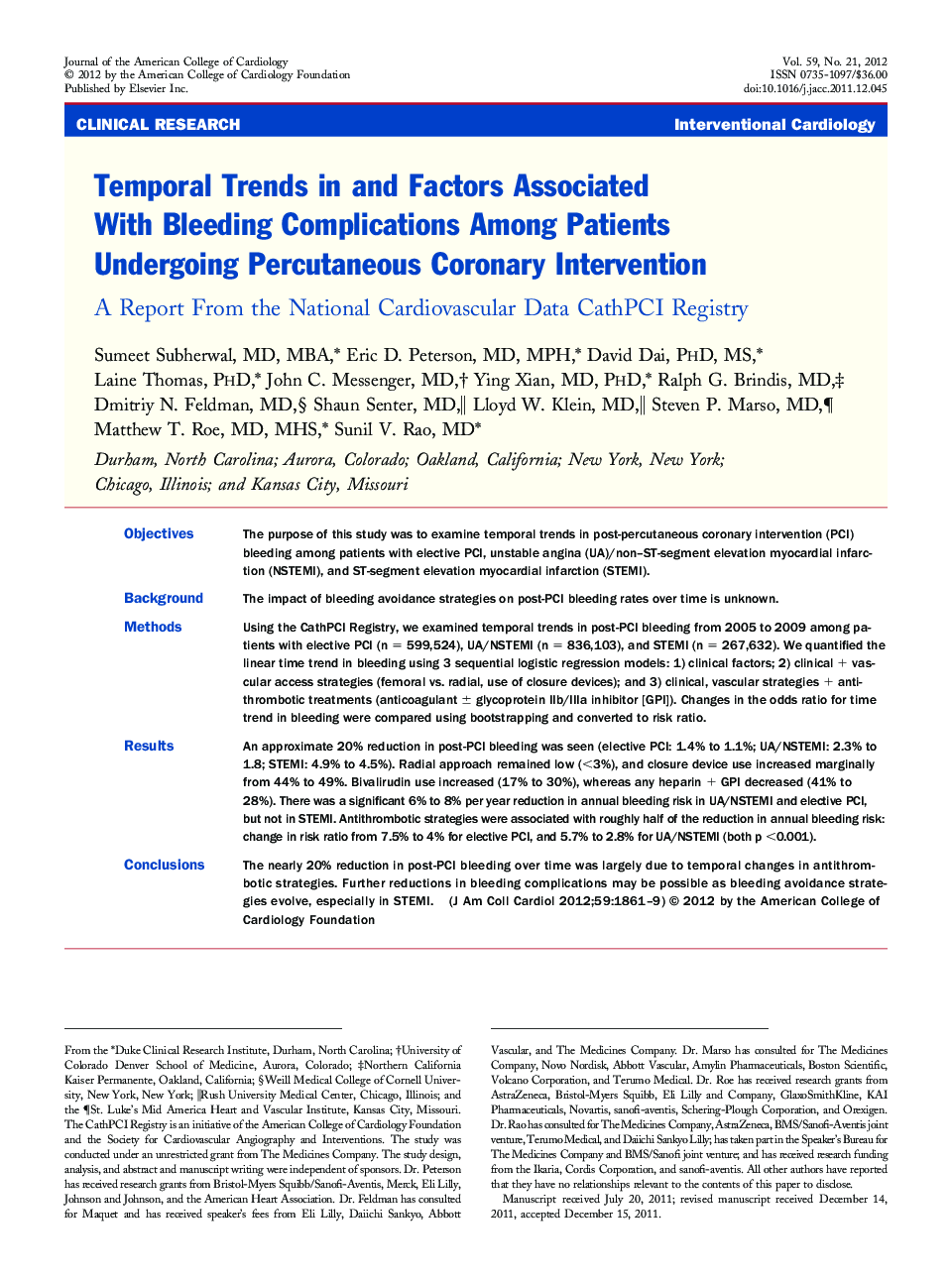| کد مقاله | کد نشریه | سال انتشار | مقاله انگلیسی | نسخه تمام متن |
|---|---|---|---|---|
| 2948609 | 1577210 | 2012 | 9 صفحه PDF | دانلود رایگان |

ObjectivesThe purpose of this study was to examine temporal trends in post-percutaneous coronary intervention (PCI) bleeding among patients with elective PCI, unstable angina (UA)/non–ST-segment elevation myocardial infarction (NSTEMI), and ST-segment elevation myocardial infarction (STEMI).BackgroundThe impact of bleeding avoidance strategies on post-PCI bleeding rates over time is unknown.MethodsUsing the CathPCI Registry, we examined temporal trends in post-PCI bleeding from 2005 to 2009 among patients with elective PCI (n = 599,524), UA/NSTEMI (n = 836,103), and STEMI (n = 267,632). We quantified the linear time trend in bleeding using 3 sequential logistic regression models: 1) clinical factors; 2) clinical + vascular access strategies (femoral vs. radial, use of closure devices); and 3) clinical, vascular strategies + antithrombotic treatments (anticoagulant ± glycoprotein IIb/IIIa inhibitor [GPI]). Changes in the odds ratio for time trend in bleeding were compared using bootstrapping and converted to risk ratio.ResultsAn approximate 20% reduction in post-PCI bleeding was seen (elective PCI: 1.4% to 1.1%; UA/NSTEMI: 2.3% to 1.8; STEMI: 4.9% to 4.5%). Radial approach remained low (<3%), and closure device use increased marginally from 44% to 49%. Bivalirudin use increased (17% to 30%), whereas any heparin + GPI decreased (41% to 28%). There was a significant 6% to 8% per year reduction in annual bleeding risk in UA/NSTEMI and elective PCI, but not in STEMI. Antithrombotic strategies were associated with roughly half of the reduction in annual bleeding risk: change in risk ratio from 7.5% to 4% for elective PCI, and 5.7% to 2.8% for UA/NSTEMI (both p <0.001).ConclusionsThe nearly 20% reduction in post-PCI bleeding over time was largely due to temporal changes in antithrombotic strategies. Further reductions in bleeding complications may be possible as bleeding avoidance strategies evolve, especially in STEMI.
Journal: Journal of the American College of Cardiology - Volume 59, Issue 21, 22 May 2012, Pages 1861–1869